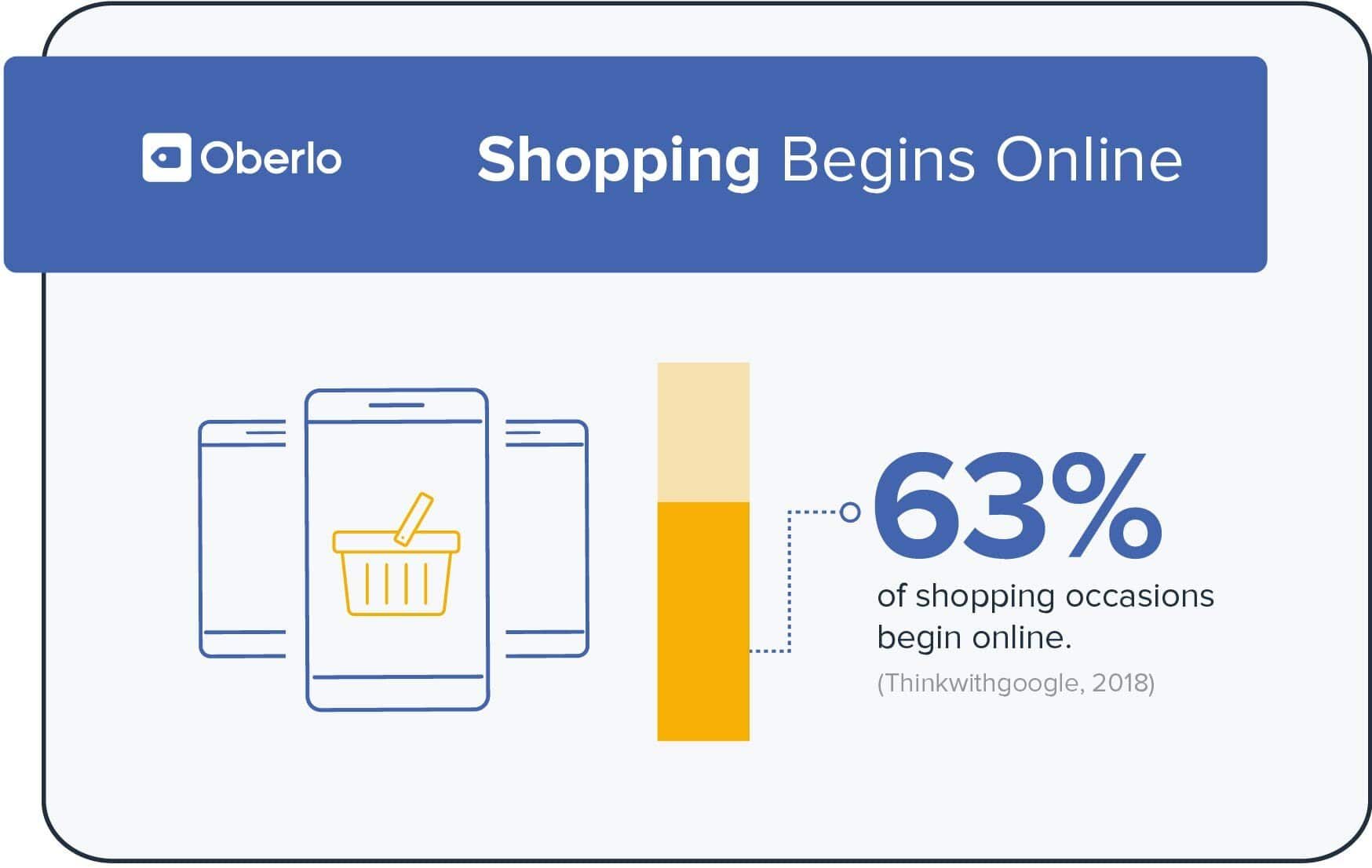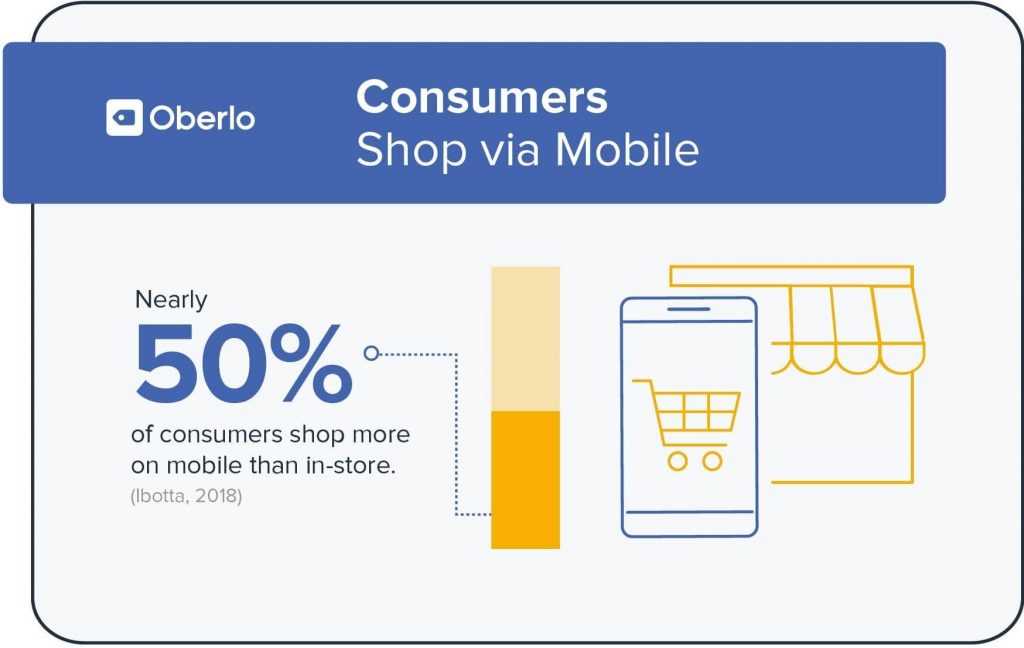10 Online Shopping Statistics You Need to Know in 2020

From the way we network, to the way we get our news – we’re slowly but surely moving everything online. And shopping is no exception.
In the past few decades, online shopping has gone from being non-existent to becoming a multibillion-dollar industry. Buying things online has become a common practice among millions of people around the world. Recently the number of people buying goods and services online has increased more than ever before.
One of the reasons why online shopping has grown so much over the years is because of the experience that businesses are able to provide to their customers. We’re constantly seeing businesses add new features and services for online shoppers, with the intent of providing them the same support and comfort that they would have during an in-person shopping experience.
The truth is that shopping online is becoming more and more like shopping in person.
If you’ve got an online store, or are interested in starting an online business, these top 10 online shopping statistics will help guide you in the right direction for 2020.
Let’s get started. Here are the 10 online shopping statistics that you need to know about in 2019:
1. How Many People Shop Online?
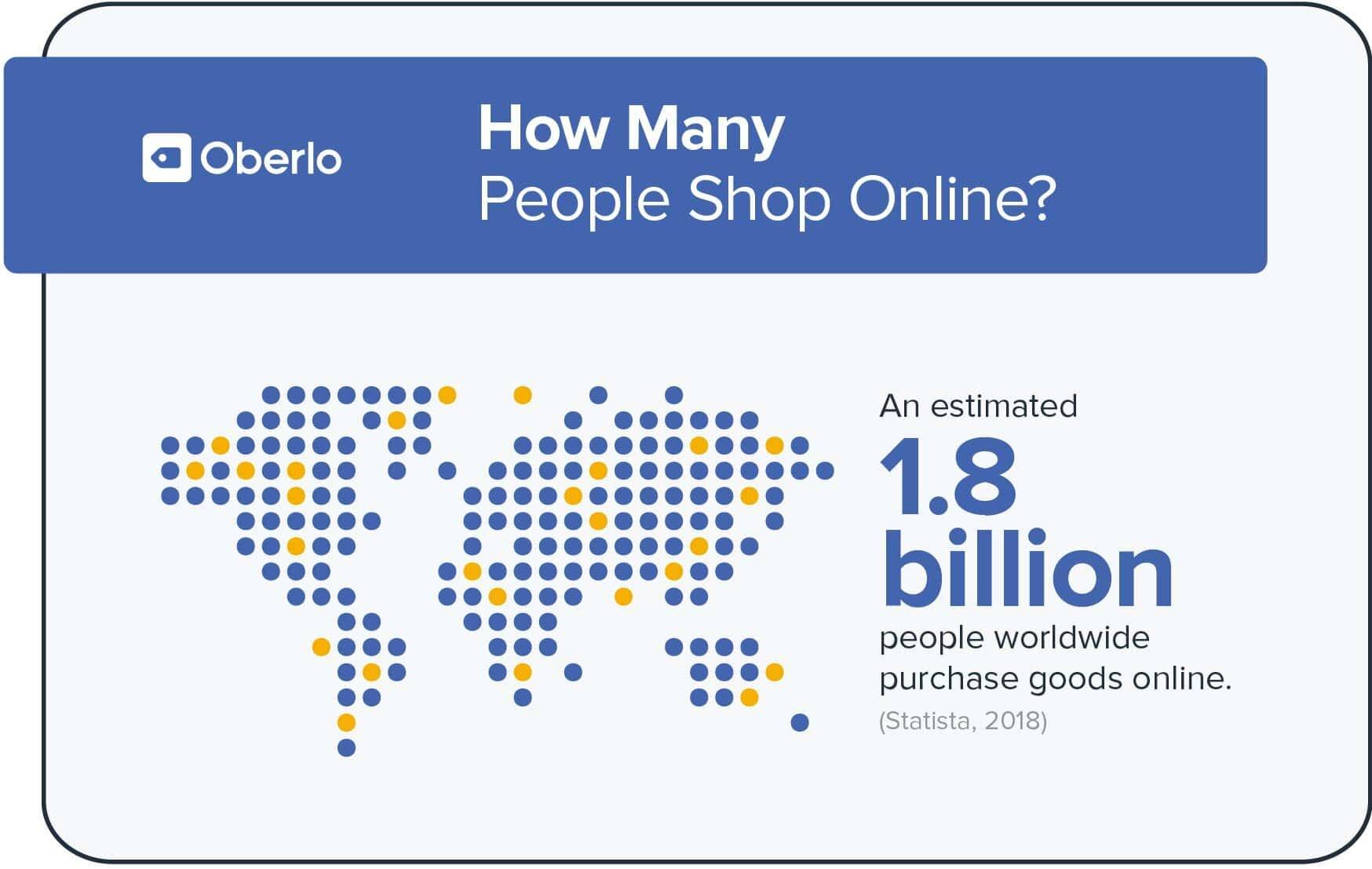
In 2018, an estimated 1.8 billion people worldwide purchased goods online (Statista, 2018). In the same year, global e-retail sales amounted to $2.8 trillion. If that isn’t enough to blow you away, projections show that global e-retail sales are going to grow to up to $4.8 trillion by 2021.
The growth of online shopping is simply impressive. And it doesn’t seem like it’s going to slow down any time soon. Which is good news for you, whether you’re an online buyer or an online seller.
The reason for choosing online shopping could vary from convenience to competitive prices. In addition to that, online businesses are trying their best to make sure that the experience of online shopping matches in-person shopping experiences. This includes providing customers with detailed product descriptions and images. Now, you’ll easily find more details and product descriptions from the comfort of your home. This includes advancements such as the 360 degree product views, and model size details for online clothing stores.
If you’ve got an ecommerce tore, you probably know that with growing competition it can be hard to stand out. That’s why it’s important to choose your target audience carefully, and try to focus your efforts on your customers. This statistic also shows us that having a digital presence is critical for businesses.
2. Shopping Begins Online
63 percent of shopping occasions begin online (Thinkwithgoogle, 2018).
This means that no matter where customers are finally making the purchase (online or in a brick-and-mortar store), their customer journey is starting online – in most cases on Google or Amazon, where they’re doing their research. That’s also why it’s crucial for brands to have a strong online presence. By improving the customer experience from the very first step, businesses have a higher chance of getting customers to buy from their store.
Understanding how people search helps businesses create a unique experience for them. No two customers shopping online have the exact same path to purchase. That’s why if you’re an online store owner, it’s so important to understand what you can do to customize the online journey for customers.
With the enhancement in digital technology, it’s no surprise that today’s consumers are in control of their path to purchase. They’re open to explore as many categories, brands, and products as they would like to.
3. Consumers Shop via Mobile
Nearly half of consumers shop more on mobile than in-store (Ibotta, 2018).
It’s no secret that mobile shopping has been on the rise. If you plan on running a successful ecommerce website, you can’t afford to ignore mobile users and mobile shopping. Consumers are using their mobile devices for all steps of the buyer journey, and that includes various online shopping activities. As of the fourth quarter of 2018, desktop PCs accounted for roughly the same amount of global e-retail orders as smartphones. In terms of retail website visits however, smartphones took the lead, and was the number one device that people were using to visit retail websites.
Mobile is undoubtedly the direction in which consumer habits are headed. In light of this, there’s a lot that you can do as a store owner to make sure that you keep mobile in mind when you’re working on your business. To start, you should make sure that your store has a user-friendly mobile app, or mobile website that your customers can access. Even if they don’t make the final purchase through their mobile devices, you should try to provide them with a comfortable and enjoyable experience. It’s your responsibility to make sure that you create a shopping experience that appeals to your customers.
If you’d like to get to know more about mobile commerce, check out The Ultimate Guide to Mobile Commerce.
4. The Biggest Marketplace Worldwide
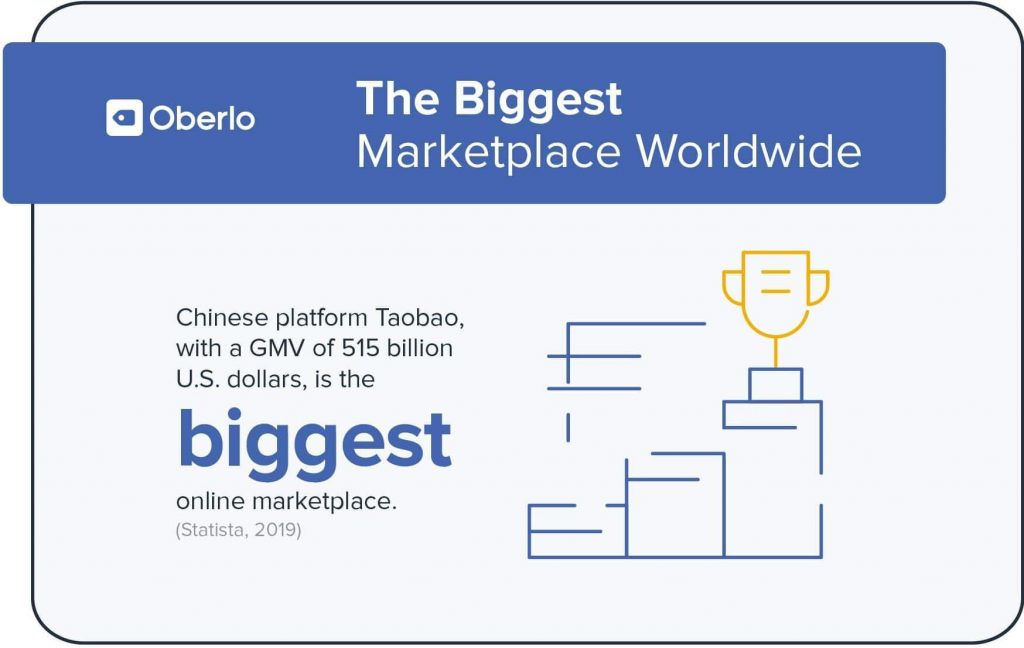
Chinese platform Taobao is the biggest online marketplace, with a GMV of $515 billion (Statista, 2019). For comparison, Tmall and Amazon ranked second and third with $432 and $344 billion in annual third-party GMV respectively.
To put this statistic into perspective, the top online marketplaces in the world sold $1.66 trillion in 2018. Marketplace sites like those operated by Alibaba, Amazon, and eBay accounted for more than 50 percent of global web sales in 2018.
An ecommerce marketplace is a website where the products are provided by several third parties while the transactions are processed by the marketplace itself. The transaction is processed by the marketplace and then the order is fulfilled by the chosen retailer or dropshipper. And since ecommerce marketplaces list products from a number of different sellers, there is usually more variety and availability in terms of products, compared to online retail stores.
5. Most Popular Online Payment Method
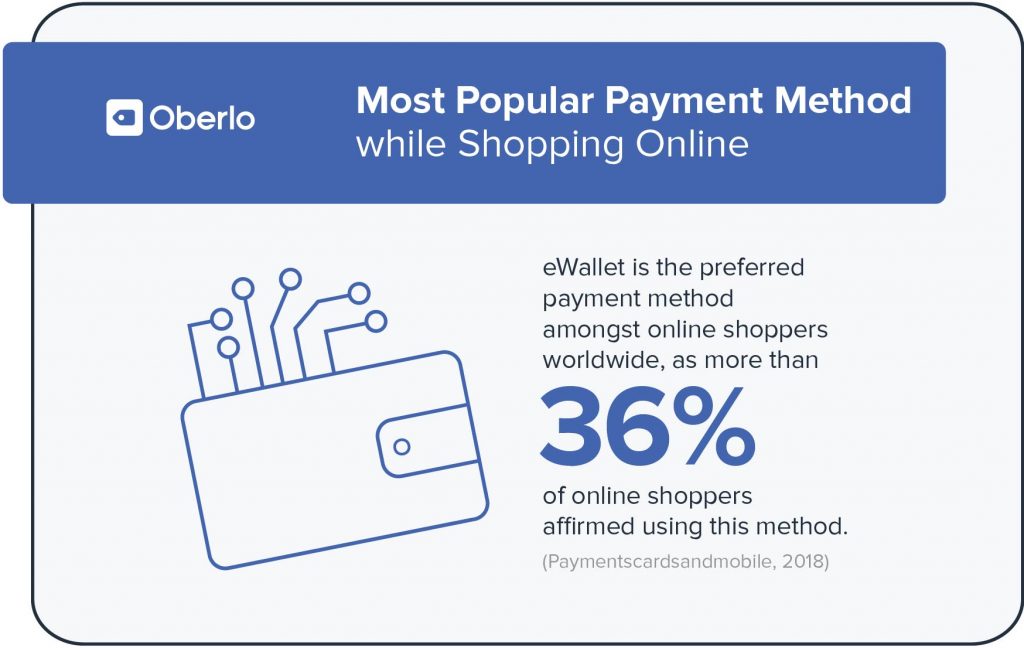
eWallet is the preferred payment method among online shoppers worldwide. More than 36 percent of online shoppers paid using this method (Paymentscardsandmobile, 2018). Following behind in second place are credit cards, and debit cards as the third most popular payment method.
eWallets, also known as a digital wallet is an electronic device or online service that makes it possible to make electronic transactions. This includes online payments, and also in-person purchases. Some of the commonly known eWallets include Apple Pay, Samsung Pay, Google Pay, and PayPal.
If you have an online store, or are planning to start an ecommerce store, it’s important for you to consider your payment gateways. You need to always ensure that you provide your customers a secure and easy checkout experience. You also need to consider where your target audience is based, so that you can ensure that the payment methods that you include are the ones that they’re aware of, and are familiar with.
Read Full Article – Here
Source – Click Here
Recommended Posts

How To Check Webmail Using Gmail
January 21, 2021

COVID Brings An Explosion In Ecommerce, but High Volume of Stalled Carts Causes Concern
January 18, 2021

Covid19 Era: Top 10 Tech Skills in Demand
August 4, 2020



